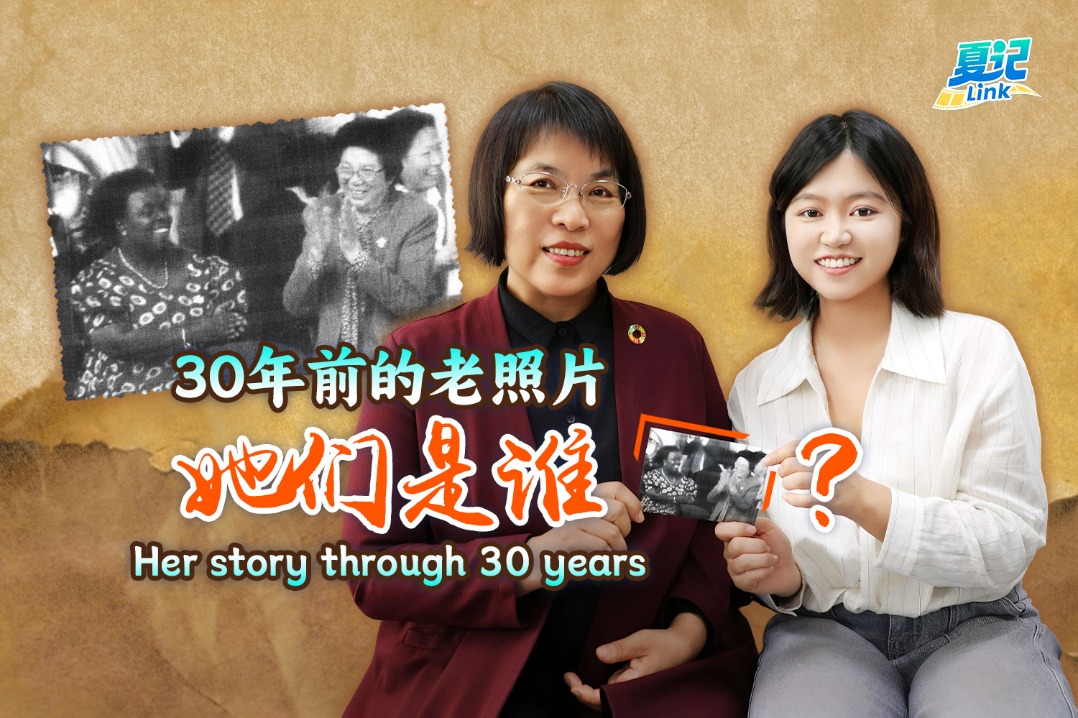Building decks
A Chinese-made board game, based on world film history, has been launched, Xu Haoyu reports.

On March 22, 1895, a short footage of Exiting the Factory, shot by Louis Lumiere, was projected onto the walls of the Grand Cafe in Paris, and film was born.
It took less than 10 years for audiences to adapt to the new art form, from being terrified to see an incoming train on-screen to being able to remain calm facing robbers' guns in The Great Train Robbery.
Yang Zhixue, a 34-year-old Beijing resident, has condensed film history into a German-style deck-building board game, Film Centenary, allowing players to devote themselves to the development of the film industry in different eras and regions.
After two years of designing and testing, the preorder version of the game was officially launched on Gstone, an application for tabletop gamers in China that has over 1 million users, on March 22 at 8 pm (local time). Over 600,000 clicks streamed in and the limited 2,500 stock was sold out in some 4 minutes, just enough time for consumers to put in their delivery address. It marked a historic moment-the fastest tabletop game launch on Gstone.
Yang, one of the screenwriters of the Chinese sci-fi film The Wandering Earth, says the project officially started in October 2019.
"At first, my goal was to create a world-class product, but by 2021, my only wish was to complete it," he adds.
It was Yang's first time getting his hands on the whole process of producing a board game. He pictured himself leading a team of 10 people at first, but in the end the number went up to 30, covering production, art, user interface design, typesetting, proofreading, marketing and sales.
Organizations such as China National Film Museum, Shanghai Film Group and French Cinematheque, as well as Li Yiming, an expert who has been researching Chinese and foreign film history since 1985, played the role of academic adviser in the project.
Over 100 stills from various films have been used in the game while the rest was taken from the public domain. It took a year and a half to obtain authorization for the stills. At first, Yang had no clue about whom to contact. He sent out many emails to original producers of the films he picked, but the response was not particularly encouraging until French Cinematheque came into his sight. Yang says many stills no longer belonged to the studios that made the films but with collection agencies. With help from French Cinematheque and his friends, Yang reached out to the agencies in different places. He describes the process as "crossing the river by feeling the stones".
Getting stills
Yang says he got the authorization of some stills easily.
The Clip& Still Licensing Department of Warner Bros provided a clear item form to him; Shanghai Film Group saw the game as a meaningful product and provided some stills for free that it could; Shochiku from Japan asked dozens of questions through a number of emails, and eventually declined the cooperation request with the concern that Yang's studio might be too small to protect copyright of the stills; he failed to get authorization of one still from a French agency because their staff members were not available due to the pandemic on the day that Yang was supposed to pay.
He says he once considered hiring artists to paint classic scenes from films, but he couldn't fight the thought of presenting the original stills. It was "worth the effort", he adds.
Yang made a quick decision on the core mechanism of the game.
Following the development of the international film industry, the game is divided into three different eras, presenting different genres. The first era shows the birth and development of film from 1895 to the 1920s, marked by the screening of Exiting the Factory, featuring genres such as "montage school","German expressionism" and "Kinoeye". The second era captures the significant moments in film history from 1930 to the 1960s, such as the establishment of Hollywood. The genres include "classical Hollywood", "Italian neorealism" and "French poetic realism". At last is the modern era, which began with the emergence of the new wave from the 1960s to the 1990s. During the era, New Hollywood, French New Wave and Left Bank Group injected fresh blood into the industry.
The game map contains four regions: Eastern Europe, Western Europe, North America and Asia. In all three eras, a player has to gain more market share and dominate the region. Also, to stay close to history, the Asian market can't participate in the first era, as the first large-scale film studio in Asia was built around 1922.
The players can run a film company for "100 years", compete with peers in various regional markets, develop their industrial technology and aesthetics over three eras, and become the most prestigious company in the industry to win the game.
Printing sets
Yang has been interested in history since high school. He studied archaeology and museology at Nankai University in Tianjin, from 2007 to 2011. After his graduation, he switched his focus to film and received a master's degree in film studies from China Film Art Research Center in Beijing in 2014.
Yang says the whole design team, including himself, is really into film history. "We wanted to remind people of the good stuff in the golden times," he says.
Chen Minlu, the co-founder of Gstone, says Film Centenary is the "perfect convergence" of game and film.
She says: "As a gamer, I experienced the entirety of running a studio start-up through 100 years of cinematography history. As a film lover, I was actively involved in filmmaking, trendsetting, technique development, while enjoying so many classic stills. The game is definitely a must-try."
Si Ling, a film lover from Shenyang, Liaoning province, comments on social media: "The game is delicately designed. Various major events in film history, small strategies and game mechanics are combined quite skillfully. It's such a joyful way to learn about film history."
Zhang Xu, from Chengdu, Sichuan province, has watched over 3,000 films and played more than 100 board games. He comments on social media: "As a film lover, each time when a card is revealed, it's like meeting an old friend. These were milestones at the time but only a few people recognize them now. So when I see these films and filmmakers printed on the cards, I feel like they are treasures that have been hidden away for years and are being shown today. During playing, there are many options available to run your own film company. Crucially, these related genres are not abstract but will correspond to certain films and film directors. Players can always enjoy new experiences playing different genres."
Yang says he finds that the Chinese market is definitely embracing and encouraging the development of local board games.
According to the contract signed with a stills collection agency from Europe in 2019, the production team is only allowed to print 2,500 sets. Yang didn't want to invest more money in getting authorization to print 2,500 or 5,000 sets more, because in his expectations, which is based on his observation of the industry, only 1,000 sets would be purchased smoothly. He would need to work hard to create another 500 sales to cover the cost, and the rest would be wasted or given away freely to families or friends.
"I would never call myself bold but conservative," he says. "I learn from experience, if anyone has done it in the past and how they did it."
Yang says just two years ago it was a great achievement for a board game made by a domestic designer to raise enough funds for producing 300 to 500 sets, and normally the production team would print 500 to 1,000 sets in total. However, there are a small number of Chinese-made board games that are crowdfunded to produce 2,500 sets in recent times.
China has a long history of creating classic tabletop games like mahjong and Go, Chen says.
"We believe the success of Film Centenary will act as a core drive for Chinese designers to create more board games."


Today's Top News
- Creativity propels soft power progress
- Rare earth controls boost stability, security
- Building a world where women can shape their own future and fulfill their potential: China Daily editorial
- US interests best served by dialogue not coercion: Editorial flash
- China's move on rare earths aimed at safeguarding the industry
- China's express delivery volume tops 150 billion parcels






























